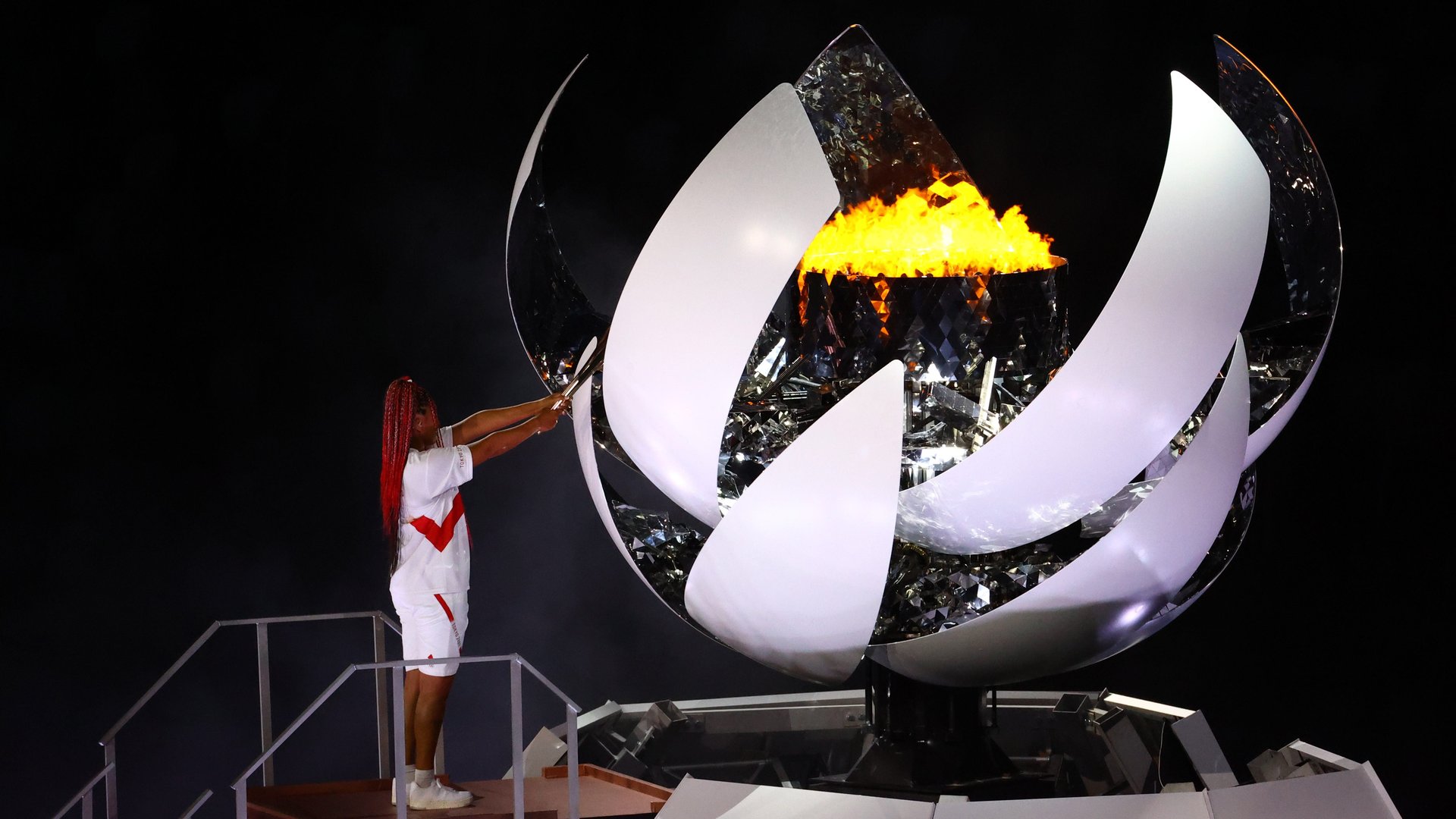Naomi Osaka was a meaningful pick to light the Olympic cauldron
The Tokyo Olympics are officially open.


The Tokyo Olympics are officially open.
A moving and somber opening ceremony ended with the traditional lighting of the Olympic cauldron—a prestigious honor that is typically given to a former athlete from the host country or a person who represents Olympic values. Famous examples include a shaking but determined Muhammad Ali at the 1996 Summer Games in Atlanta, or the seven teenage athletes who were hand-picked by Team GB Olympic medalists at the 2012 Summer Games in London.
This year, 23-year-old tennis star Naomi Osaka had the honor of lighting the Olympic cauldron at her home Games.
The Olympic flame and cauldron
The Olympic cauldron is the final home of the Olympic flame, which is lit in Greece and then travels around the world and back to the Olympic host country in a torch relay that lasted 121 days this year. The flame traveled through every prefecture in Japan before making its way to Tokyo for the Opening Ceremony.
The design of the torch is unique for every Olympics and inspired by the host country. This year, it is rose gold, like the world-famous Japanese cherry blossoms, and made in part “from recycled aluminum that was used for temporary housing” for those affected by the 2011 Tohoku earthquake and tsunami, which killed nearly 18,000 people and caused a nuclear leak.
“Hydrogen, which emits no carbon dioxide when burned, will be used to fuel the torch for selected legs of the relay,” according to Olympic organizers, while the cauldron will be powered by propane, according to S&P Global Platts.
Who is Naomi Osaka?
The choice of Osaka, a tennis player who has won four Grand Slam titles, is symbolic at a time when the Olympic movement is coming under fire for its rules restricting athletes’ political expression at the Games. Born in the city of Osaka to a Japanese mother and Haitian father, she mostly grew up in the US, but represents Japan in international tennis tournaments. (She chose her Japanese passport over her American one in 2019 because Japan doesn’t allow dual citizenship past the age of 22.)
Osaka is an outspoken supporter of the Black Lives Matter movement, and a mental health advocate who has been open about her own struggles with depression. French Open officials recently fined her $15,000 for refusing to take part in the traditional post-game press conference for mental health reasons—and she withdrew from the tournament as a result.
“I felt under a great amount of pressure to disclose my symptoms—frankly because the press and the tournament did not believe me,” she wrote in Time magazine after that controversy. “I do not wish that on anyone and hope that we can enact measures to protect athletes, especially the fragile ones.”
Olympic rules (pdf, p. 2) prohibit athletes from taking a knee or wearing accessories featuring “political messaging”—which Osaka has done in past tennis tournaments—inside of Olympic venues. But choosing her to light the cauldron could be seen as a tacit endorsement of her values and right to express herself.